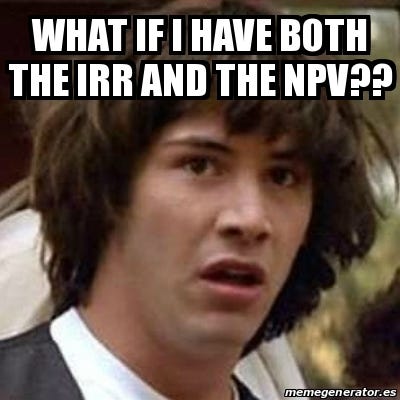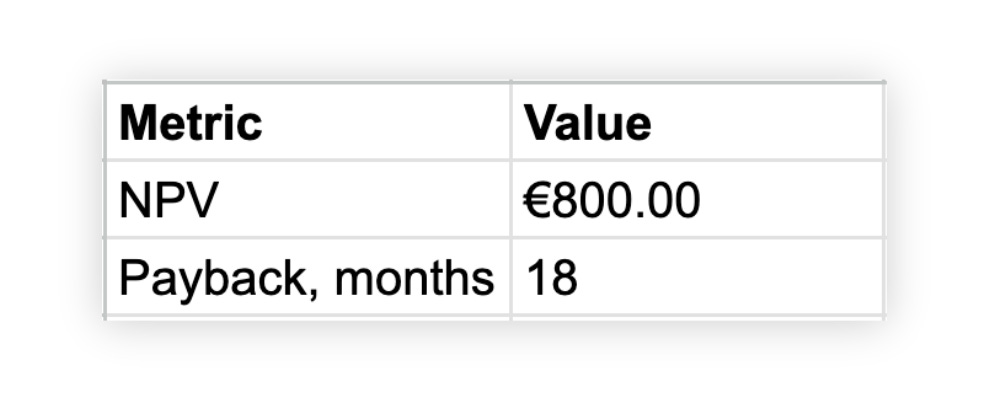How write a winning business case
A no-nonsense guide on crafting an effective business case. It's suitable for startup founders seeking funding as well as product leaders building new ventures inside existing corporations.
In today’s newsletter:
Success metrics for a business case (ROI/NPV/IRR and Payback)
🔒 Where to play - How to assess the opportunity of your business?
🔒 How to win - Framing your value proposition and winning formula
🔒 A practical take on Unit Economics and GTM
🔒 How much money to ask for funding?
Back in 2014, together with my business partner, we secured a ~$250k deal for our seed-stage startup from a private VC. After the startup hustles, I dove head-on into the corporate world.
A corporation in a way acts as an incubator of new startup ideas. Together with the business strategy teams, I was both supporting and leading a series of business case defenses (both at OLX and at Bolt). Some of them ended up becoming new businesses or, in one instance, even a new vertical.
There are evident similarities between pitching a business to a VC and a corporate stakeholder. But what really constitutes a successful business case? What do investors care about the most? How do you present it in such a way that’s convincingv?
Boiled down years of experience into an actionable guide. My expectation is that by the end of this article, you’ll be fully equipped to prep a business case of your own.
🎯 Success Metrics
💰 ROI and Payback
Let’s be blunt. The only thing that investors care about is getting a good ROI on their buck and recovering it as fast as possible (payback). Of course, ROIs differ between industries, but a good rule of thumb is that it shouldn't be lower than 10%.
Why? Simply because there are alternative hassle-free investment options with lower ROIs. For example, you can invest in S&P Index Funds and aim for ~8% averaged returns.
For payback, the expectations are also straightforward. It should be as short as physically possible, considering the constraints of the business traction. 12m payback is unbelievably good, 18m is decent, 24m tolerable, but anything beyond that needs to be compensated with higher ROIs.
When it comes to corporations, stakeholders are always benchmarking new ventures against their Core business in terms of ROI and Payback. This should be your thinking as well. Don't even bother with something less efficient; you'll just waste your time.
📈 NPV/IRR
A more nuanced way to look at ROI is through the lens of NPV or IRR.
NPV (Net Present Value) shows the value of the business in the future, but with a twist. Your revenues or even profits each year might increase, but they will be discounted to a lower level (typical yearly discount rate is ~25%).
It’s a reasonable metric to look at because of the key principle in finance “Money today is more expensive than money tomorrow”. You have inflation, risks, and whatever other external events. By using NPV, pragmatic investors trim down the growth ambition of a business to a more reasonable level.
IRR (Internal Rate of Return) shows the return rate over a payback period, but also considers negative cash flow in the first year. This assumes that you’re buying assets or making other investments, that are going to compensate over time.
🤯 Which metric to use?
It depends. If your business is asset-heavy, then IRR would be more accurate. If you’re not making heavy investments upfront, then NPV is the way to go.
The two metrics above show that the business would yield a net profit of €800 (measured in today’s money) and will fully recover the invested money in 18 months. Everything beyond that period would be pure profit for the investor.





